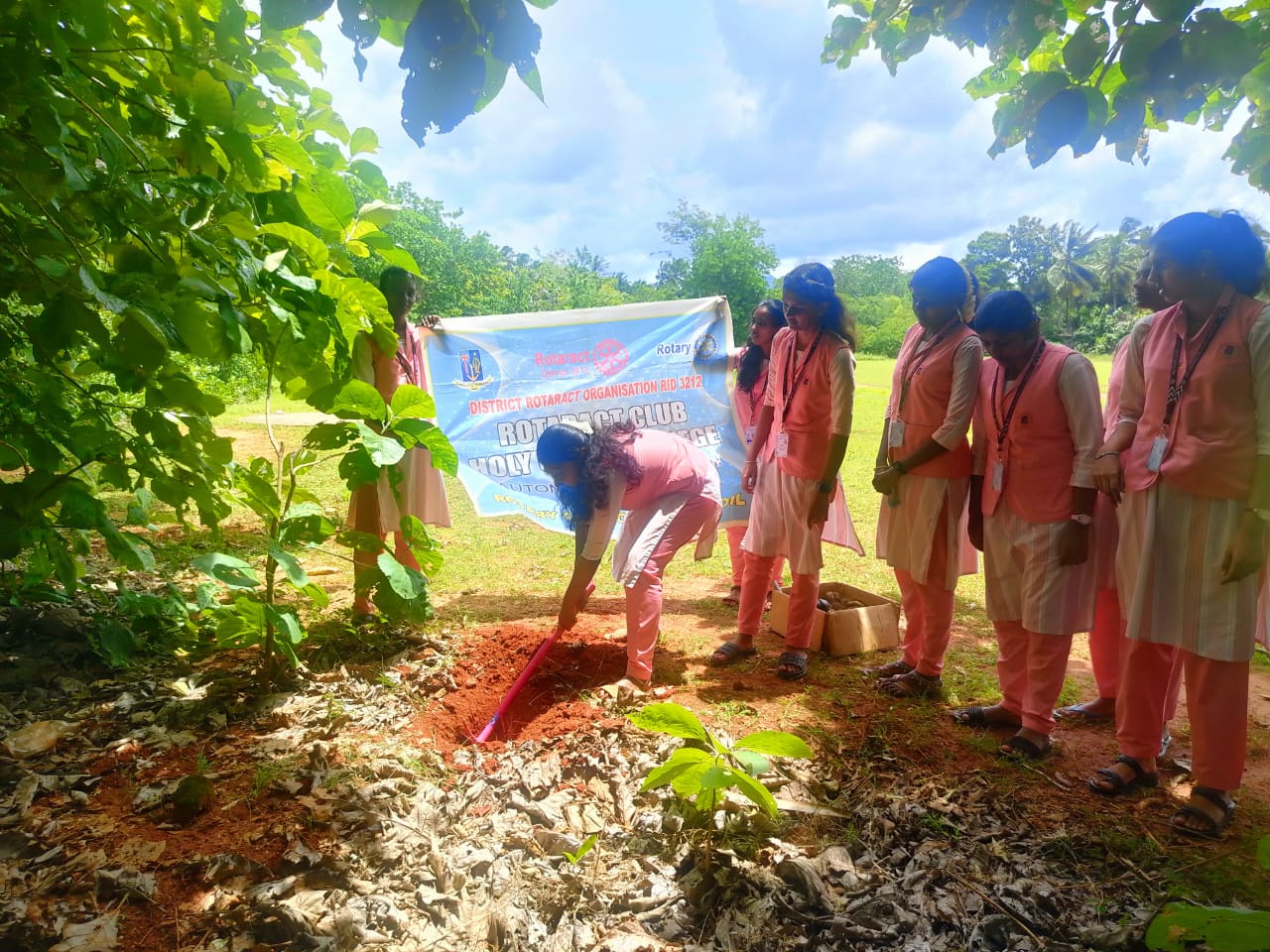By Prof. Jeni Padua, PhD, Director, ESRAG South Asia Chapter
In the heart of South India, a quiet yet powerful movement is taking root—an inspiring mission to revive the endangered Palmyra Palm. Once a cornerstone of the region’s ecosystem and culture, this towering tree, renowned for its resilience and countless uses, is being brought back to life, one seed at a time. The Palmyra, often called the “Tree of Life,” has long sustained people by providing food, shelter, and income. However, its significance faded over time, and now only a few remain to tell its story.
Yet the Palmyra is more than just a tree. Its sweet sap quenches thirst and is used to make jaggery; its tender fruit cools the summer heat, and its leaves provide shelter for homes. Its roots prevent soil erosion and recharge groundwater. In arid lands, this tree was a lifeline. Today, under the stewardship of the Past Assistant Governor of RID 3212, Dr. Sahaya Selvi, myself, and Dr. Virgin Jeba, along with the dedicated Rotaractors of Holy Cross College, Nagercoil, and a team of young eco-champions, the Palmyra is being rediscovered and restored—not only as an ecological protector but also as a symbol of sustainable living.
An Ancient Treasure at Risk
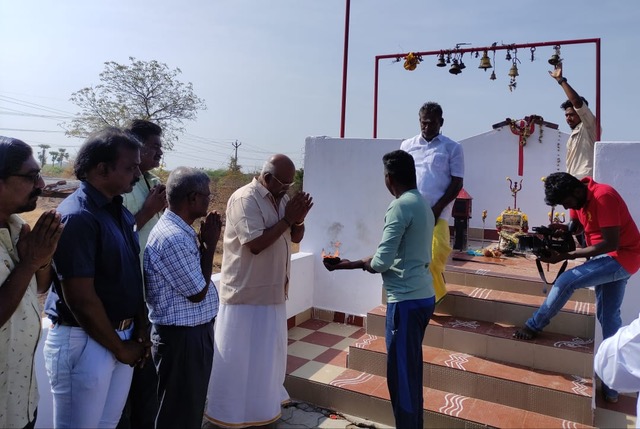
Temple of guardian of a waterbody
For centuries, the Palmyra Palm stood as a testament to nature’s resilience. It could thrive in harsh, dry climates and provide for entire communities. However, its value began to diminish as industrialization spread, pushing traditional practices aside. Many younger generations lost touch with this vital tree, and its numbers dwindled, leaving its seeds scattered across dry landscapes, waiting for a chance to grow again.
The Palmyra Plantation Drive, launched in July, is a grassroots initiative aimed at reviving this vital species. Powered by the passion of the Rotary Club of Nagercoil, RID 3212, ESRAG South Asia, and the students of Holy Cross College, the goal is to plant 1,000 Palmyra trees in and around local communities. These young leaders are not just planting trees; they are restoring a legacy. Each eco-warrior is tasked with planting and caring for a seedling, not in distant parks or reserves, but right in their backyards or villages. It’s a simple, personal commitment to protect and nurture a species that once protected and nurtured them.
Rotaractors at the Forefront of Change
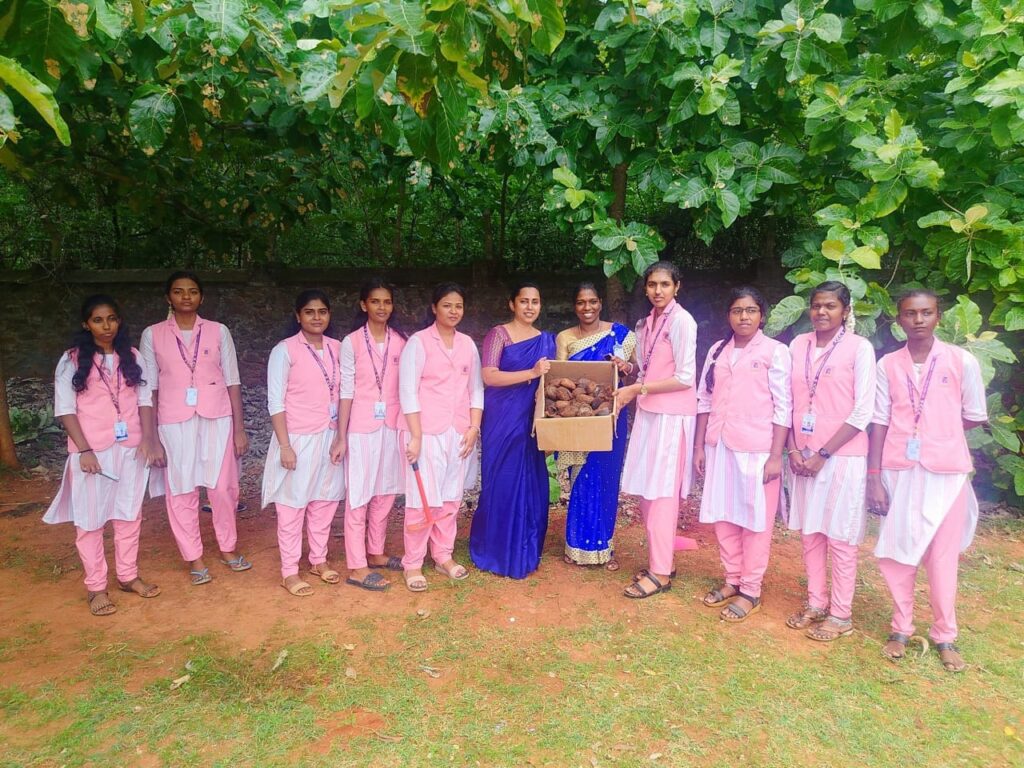
Rotaractors with the Palmyra seeds to be planted
What sets this initiative apart is the energy and vision of the Rotaractors involved. These students aren’t just planting trees; they are engaging in community eco-entrepreneurship. Through workshops and local outreach, they are teaching their neighbors how to use natural resources sustainably—demonstrating how natural products like palm, jute, banana, and coconut leaves can be crafted into eco-friendly goods. The revival of the Palmyra is not just about environmental conservation; it’s about reviving an economy that thrived on the tree’s many gifts.
There’s even more at stake. The Palmyra Palm has the potential to become a valuable agroforestry resource, particularly in the arid regions of South India. Its deep roots and ability to survive in dry climates make it a perfect fit for areas facing water scarcity. By reintroducing it into their communities, the Rotaractors are showing that conservation and economic development can go hand in hand.
A Community-Driven Initiative
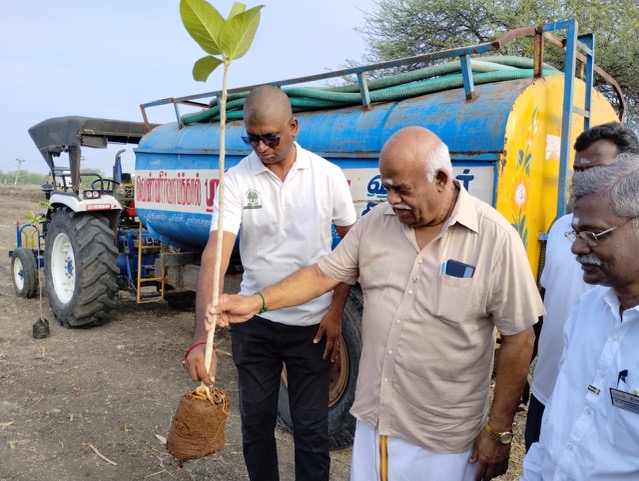
VR Muthu planting saplings
With the first 100 seeds already planted, these Rotaractors are leading by example, inspiring others to join this mission to restore both the environment and a rich heritage. What makes this initiative unique is that it is driven entirely by a sense of responsibility and love for nature. There are no external rewards—no financial gains or external funding. These university students are planting trees because they believe in the importance of conserving this endangered species.
The effort is already bearing fruit—both literally and figuratively. With 100 Palmyra seeds now in the ground, these young women can already sense the change. Each sapling represents a future where the Palmyra Palm, once thought to be vanishing, thrives once again.
A Future Rooted in Tradition
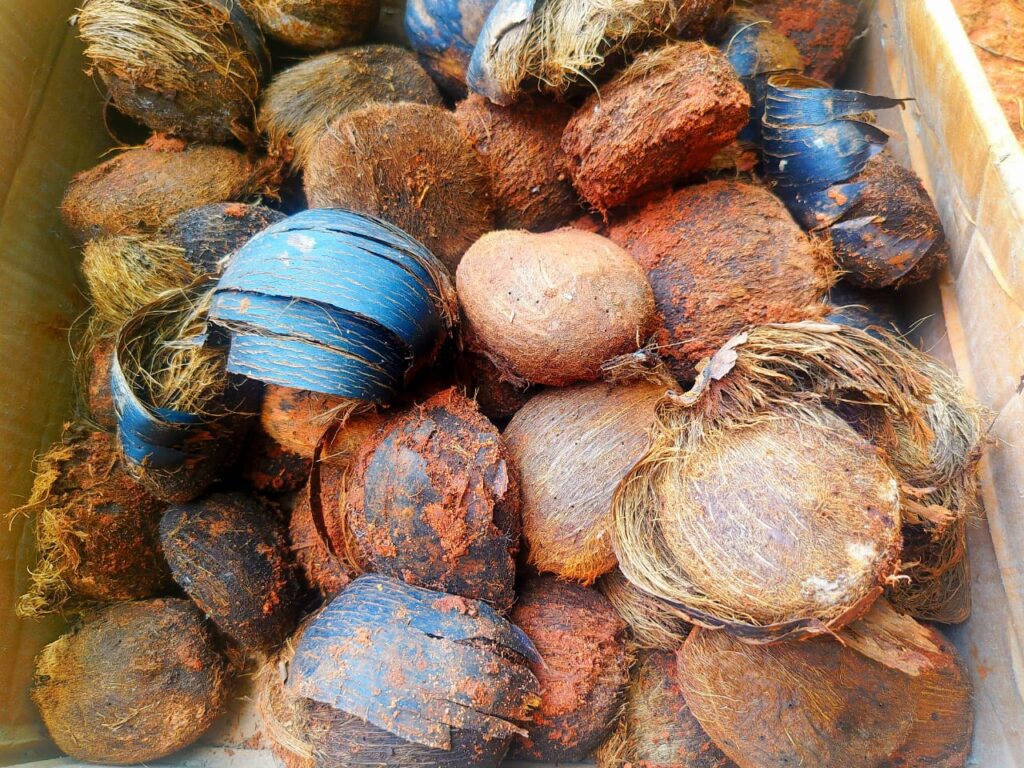
Palmyra seeds collected from the few old trees left behind
The Palmyra Plantation Drive is more than a conservation project—it is a story of hope, tradition, and resilience. As these young leaders plant trees, they are also planting the seeds of a sustainable future, one where the legacy of the Palmyra Palm will continue to thrive for generations to come.
Rtn. Dr. Jeni Chandar Padua is the Dean of Entrepreneurship at Holy Cross College in Nagercoil, India, an Indian Science Academies Senior Fellow (CSIR-CCMB, Hyderabad), and a Visiting Researcher at Zebravoewa Research Center, Lugo, Galicia, Spain. The European Commission awarded her the Erasmus Mundus Euphrates Fellowship to conduct research on gene editing using CRISPR/CAS9 technology, focusing on toxicological and environmental studies. She is a member of the Rotary Club of Nagercoil, RID 3212.

